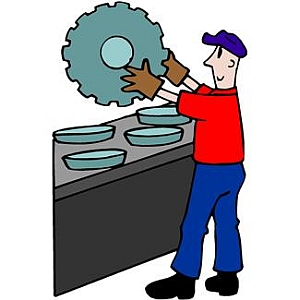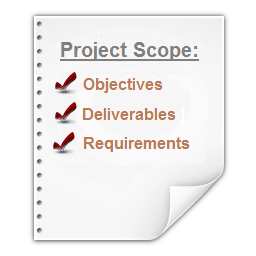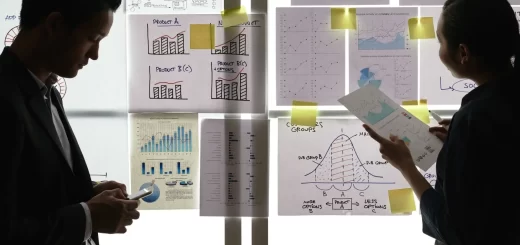Measuring the State of Your Project
 Projects should be measured against certain criteria so that executives will know what is being delivered and what decisions should be made during delivery. Project managers measure the status of their projects to determine whether the deliverables are produced, quality expectations are met, and expenses are covered. Project state helps figure out whether the team remains aligned with the priority items, expected ROI is met, the quality of the final product is sufficient, and so on…
Projects should be measured against certain criteria so that executives will know what is being delivered and what decisions should be made during delivery. Project managers measure the status of their projects to determine whether the deliverables are produced, quality expectations are met, and expenses are covered. Project state helps figure out whether the team remains aligned with the priority items, expected ROI is met, the quality of the final product is sufficient, and so on…
In this article, let’s find out how to measure project status. You will read about the major dimensions you can use in measuring the state of your project.
Time
Time is a status dimension that tells you whether your project sticks to the agreed milestones. Schedule will be the mirror that reflects the current state of your project against the milestone dates. By reviewing your project schedule you will determine if you are going to meet the project objectives.
Here are some tips that will help you measure current state of your project against the time constraint:
- Review the schedule once a week
- Keep your team focus on the schedule objective, which is to meet the milestones agreed upon by the stakeholders
- Measure the variance between target date and forecast date to determine schedule efficiency
- Know mean time of resolving typical issues and risks
- Know the longest time of resolving an open issue or risk
- Keep work effort estimates accurate and up-to-date
Money
The second dimension to measure the state of your project is money. Budget will be the way to determine what financial resources and obligations should be considered to start the project and keep it up. You must review the budget to ensure that the money allocated to your project covers the project costs.
The budget will help you determine if you are on the way to meeting the project objectives. Follow these tips to measure the state of your project in terms of budgeted resources:
- Review the budget weekly
- Hold weekly meetings with the sponsor to discuss budget-related issues and opportunities
- Keep cost estimates accurate and up-to-date
- Monitor change requests related to expense sheets to ensure the budget is updated appropriately
- Measure the variance between target cost and forecast cost
- Correlate the budget to schedule metrics to ensure adequate change in resource costs (labor, machines, technology, etc.)
Product
Product defines a physical, functional or conceptual outcome to be delivered upon project completion. It should be produced with expected quality levels in order to be accepted. The description of your project product is likely to mainly consist of user requirements, customer’s quality expectations, and acceptance criteria.
The quality of your product determines the state of the project. Higher quality means more defects are eliminated. As many product defects and issues are resolved, as closer the project gets to completion. Ideally, for any detected defect or issue there should be a mitigation solution in place.
When measuring the status of your project, follow these suggestions regarding product quality:
- Remember your ultimate goal is to deliver the product with no unresolved defects
- Keep all defects logged
- Hold weekly meetings with QA personnel to discuss logged defects and product issues
- Determine percent of unresolved defects
- Monitor and update product requirements weekly
- Be sure to have at least 1 test case per requirement
- Measure percent of requirements with test cases
Scope
Scope defines the type and amount of work to be done throughout a project. It consists of tasks and jobs with deadlines and resources.
You must monitor the scope of your project on a weekly basis to know what changes affect the tasks and activities. Regular scope reviews will help you measure the state of your project in terms of variances in budget and schedule.
Here are some tips regarding scope measurement:
- Review project scope weekly to make sure you are going to deliver the agreed upon functionality
- Collect and review all change requests
- Measure the variance in schedule, budget and quality due to change requests
- Communicate with stakeholders on requirements changes
- Measure the variance in time between the planned and actual sing-off dates
The challenge with measuring project status is to know what information to collect, how to consolidate it, and what dimensions to use in measurement. As we described in this article, the status of a project can measure in terms of schedule (time constraint), budget (cost constraint), quality and scope. In your own project management practice you can follow the suggestions and tips to measure the state of your project.













